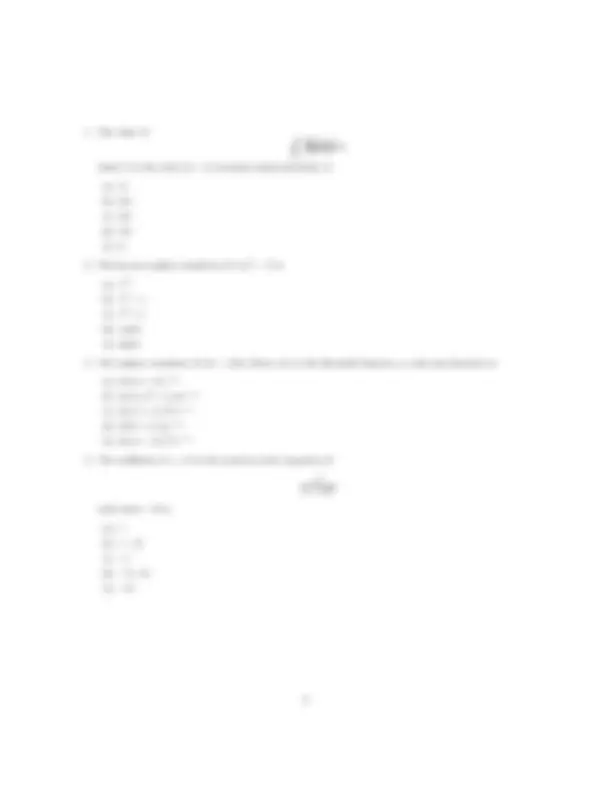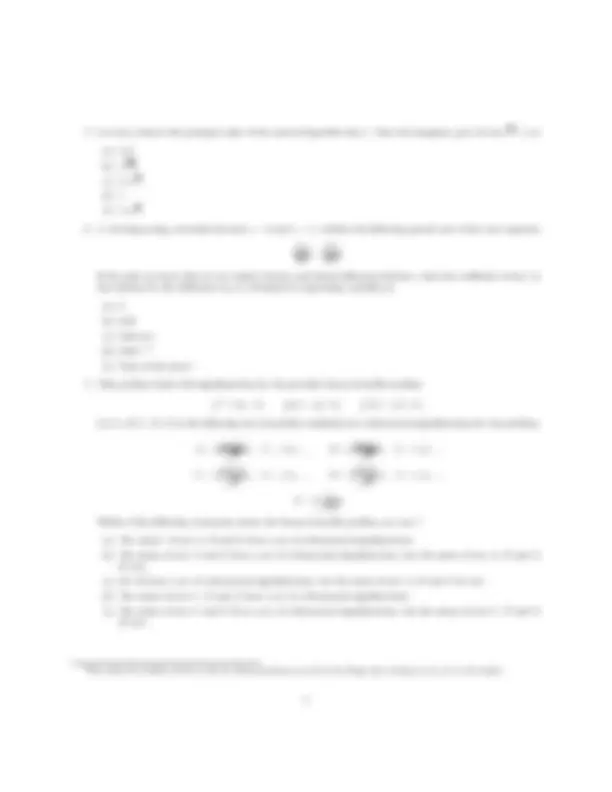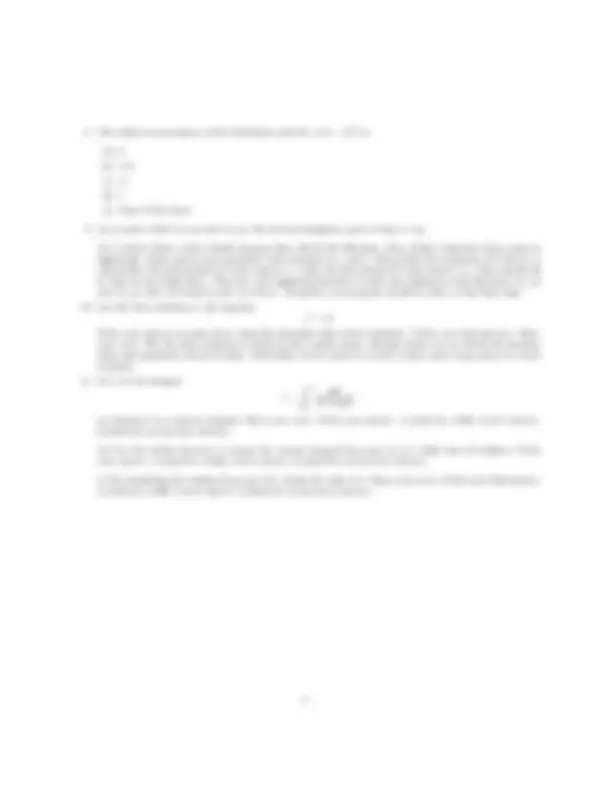





Study with the several resources on Docsity

Earn points by helping other students or get them with a premium plan


Prepare for your exams
Study with the several resources on Docsity

Earn points to download
Earn points by helping other students or get them with a premium plan
Community
Ask the community for help and clear up your study doubts
Discover the best universities in your country according to Docsity users
Free resources
Download our free guides on studying techniques, anxiety management strategies, and thesis advice from Docsity tutors
These are the notes of Exam of Complex Analysis and its key important points are: Formulas, Reasonable, Interpretation, Choice, Recording, Covered During, Traversed Counterclockwise, Circle, Inverse Laplace Transform, Heaviside Function
Typology: Exams
1 / 5

This page cannot be seen from the preview
Don't miss anything!




This is a closed book exam. You may use one 5x7 card on which you have written on both sides. No other books, papers, calculators or other materials may be used during this exam. For the multiple choice questions, a correct answer scores +2 points, no answer scores 0 points, and an incorrect answer scores −1 point. Questions 9, 10 and 11 require you to provide a written response. Write your solutions to these questions in the exam blue book. Turn in the answer sheet with your multiple choice selections for problems 1 through 8 as well as the exam blue books with solutions to problems 9, 10 and 11.
Important: Do not ask the proctors any questions about what the exam questions mean or about what is wanted, etc. If you think that a question is ambiguous then choose an interpretation that seems reasonable to you, state clearly what that interpretation is, and then answer the question as you interpret it. Of course if we think that your interpretation is not reasonable then you will get no credit.
Some formulas that may be useful
L{ 1 } = (^1) s (1) E = mc^2 (2) L{t} = (^) s^12 (3) L{y′(t)} = sY (s) − y(0) (4)
∞ A
te−xtdt = e−Ax^ (1 + x^2 Ax ) (6)
m+ m
x cos (nπx)dx = (^) n (^21) π 2 (−1)mn((−1)n^ − 1)) (8)
C
dz (z − z 0 )n^ =
2 πi if n = −1 and z 0 is inside C. (9) L{e−at} = (^) s +^1 a (10)
sin z = e
iz (^) − e−iz 2 i ;^ cos^ z^ =^
eiz^ + e−iz 2 (11) sinh z = e
z (^) − e−z 2 ;^ cosh^ z^ =^
ez^ + e−z
cos^2 (nx)dx = x 2 + sin (2 4 nnx )+ C ;
sin^2 (nx)dx = x 2 − sin (2 4 nnx )+ C; (13) sin A cos B = (sin (A + B) + sin (A − B))/ 2 (14)
Print your name:
Sign your name:
Circle the name of your Professor: Haglund Wilf
Circle just one choice below for each of the 8 multiple choice questions. Keep this page covered during the exam except when you are recording your choices. Hand in this sheet when you leave, as well as the exam blue book with your answers to questions 9,10,11, and keep the questions themselves. PRINT YOUR NAME ALSO ON THE COVER OF THE EXAM BLUEBOOK.
3 + i) is (a) π/ 6 (b)
(c) 1/
(d) 1 (e) 1/√ 2
∂^2 u ∂x^2. If the ends are fixed, there is zero initial velocity and initial deflection 0.02 sin x, then the coefficient of sin x in the solution for the deflection u(x, t) (obtained by separating variables) is (a) 0 (b) 0. 02 (c) 0.02 cos t (d) 0. 02 e−πt (e) None of the above
A = { cos √^ πkx }, k = 1, 2 ,... B = { sin √^ kxπ }, k = 1, 2 ,...
C = { cos √ 2 kxπ }, k = 1, 2 ,... D = { sin √ 2 kxπ }, k = 1, 2 ,...
E = { √^12 π } Which of the following statements about the Sturm-Liouville problem are true? (a) The union^1 of sets A, B and E form a set of orthonormal eigenfunctions. (b) The union of sets A and E form a set of orthonormal eigenfunctions, but the union of sets A, B and E do not. (c) Set B forms a set of orthonormal eigenfunctions, but the union of sets A, B and E do not. (d) The union of sets C, D and E form a set of orthonormal eigenfunctions. (e) The union of sets C and E form a set of orthonormal eigenfunctions, but the union of sets C, D and E do not.
(^1) The union of a family of sets is the set whose members are all of the things that belong to any set in the family
0
dθ 3 + cos θ. (a) Express I as a contour integral. Show your work. Circle your answer. (1 point for a fully correct answer, 0 points for an incorrect answer). (b) Use the residue theorem to express the contour integral from part (a) as a finite sum of residues. Circle your answer. (1 point for a fully correct answer, 0 points for an incorrect answer). (c) By calculating the residues from part (b), obtain the value of I. Show your work. Circle your final answer. (1 point for a fully correct answer, 0 points for an incorrect answer).